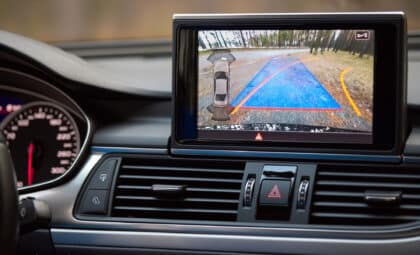Recently, we debunked some car-care myths about car washes, premium gas, and using the AC system. Here are a few more myths and their rebuttals so you can successfully navigate your vehicle’s midyear maintenance.
SUV Advantages: Reasons to go with a Chevy SUV

In reality, it might take hours of driving for your vehicle’s battery to fully recharge after a jumpstart. Take your car to a dealership so a certified technician can perform a “load test.” They’ll determine whether the battery can still hold a charge, or whether you’ll need to purchase a new one.
As long as the tire pressure light is off, your vehicle’s tires have sufficient air.
With most Tire Pressure Monitoring Systems, the light won’t come on until a tire’s inflation drops 25 percent under the recommended pressure. Per Kiplinger, it’s dangerous to wait until your tires are that low since underinflated tires can wear unevenly. They also reduce your gas mileage by roughly 0.2 percent per pound that they’re low. Be proactive about your tires’ condition and inflation by investing in a tire gauge, and using it at least monthly.
If your brake fluid level drops to or below the low mark, take your vehicle in for service as soon as possible. Low brake fluid can indicate a serious issue with the brake system, such as worn-out brakes or leaking fluid. Help prevent brake issues by scheduling a routine brake inspection with each tire rotation, or approximately every 6,000 to 7,000 miles.
Flush the coolant each time your vehicle gets an oil change.
In reality, radiator coolant doesn’t need to be replaced that frequently. Consult your owner’s manual to see how often your specific model needs this service performed. Most manufacturers recommend changing the coolant every 60,000 miles or five years.
To Lease or Buy? Find out whether purchasing or leasing is best for you
News Sources: Kiplinger, Denver Express Car Care, ABC7 News
More info can be found at green4u.com. They’ll determine whether the battery can still hold a charge, or whether you’ll need to purchase a new one.
The News Wheel is a digital auto magazine providing readers with a fresh perspective on the latest car news. We’re located in the heart of America (Dayton, Ohio) and our goal is to deliver an entertaining and informative perspective on what’s trending in the automotive world. See more articles from The News Wheel.










